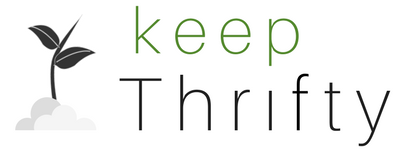
Do you ever get to the end of the month and wonder where all your money went? There’s a negative force at work against your journey to financial freedom called the Frivolous Purchase Threshold. It’ll steal your money and leave you with worthless trinkets you didn’t need. Let’s learn how to identify this bugger so we can exterminate it from our lives.
Origin Story
A few years back, we gave the store Target a nickname. We called it “the $100 store” because it seemed impossible to walk out of Target without spending at least $100.
You could run in to buy one bottle of shampoo and walk out with a new kitchen gadget, a decorative serving tray, and some great-looking throw pillows that you never knew you needed.
Target is an expert at this. In marketing circles, the work they do on optimizing store layout, lighting, and product placement to maximize your purchases is legendary.
But I think the biggest trick that merchandizers have pulled is convincing us that, below a certain price, a purchase is negligible.
Have you ever seen something in a store and said: “Well, it’s only $…“?
Self-Justifications
Whatever number you use in that statement - whether it’s $10, $20, or $200 - is your own, personal frivolous purchase threshold.
Items below that amount live in an alternate reality where we define their value not by what they offer but instead by what they didn’t cost.
That $20 serving tray was a “good deal” because it didn’t cost $50. That $10 garlic press was a “good deal” because it didn’t cost $20. Those $15 throw pillows were a “good deal” because they didn’t cost $40.
We justify purchases based on the value of a “good deal” instead of the value of a “good item”. (Tweet this )
When the frivolous purchase threshold is in play, intentionality is diverted by a shiny object with an innocuous price tag. After all, what’s $5-20?
Oh wait, $5-20 a few times over is what turns a trip for shampoo into a minimalist’s nightmare.
You wouldn’t have considered making the purchase otherwise - which means your life is no better off if you do buy the item.
If your life would be no better, let’s call that $5-20 what it really is: a waste of money.
You might as well flush a $20 bill down your toilet. The serving tray and garlic press are going to collect dust in the cabinets and those throw pillows will be out of style in 3 months or less.
Remember: you’ve got dreams you want to accomplish in life.
Rather than wasting your money on frivolous purchases, redefine your FPT to $0 and put your money where your heart is.
3 Tips to Banish the Frivolous Purchase Threshold
With all this in mind, here are three tips to banish the Frivolous Purchase Threshold from your life and turn Target from a $100 store back into a $5 store:
1. Track Your Spending
By tracking your spending, you can learn to spot your own $100 stores and enter them with caution next time around.
In addition, tracking manually (with a tool like Thrifty) helps deter you from frivolous purchases in the moment. Knowing you have to log that garlic press might be enough to keep you from buying it.
2. Put Deterrents in Your Wallet
Take a piece of painter’s tape and write one of your big financial goals on it.
Put that strip of tape on your credit card so you see your goal every time you pull your card out.
When you see that reminder, think about every item in your shopping cart - is this really worth more than my goal?
Having a constant reminder of your big goals whenever you’re going to spend is a great way to force more mindful spending.
3. Rename Your Online Accounts
Frivolous purchases don’t just happen in brick-and-mortar stores. Online shopping is great at giving you “extras” to consider in your purchases.
Where you can, rename your online accounts (and saved credit card names) in a way that discourages you. Call yourself “Non-impulsive Spender” or “Mr. Thrifty”
Otherwise, use your goal from the tip above as your name for motivation. Either can work to remind you to check your cart and purge any impulse items.

In addition, this makes checking out tougher (as you’ll have to re-enter your actual name). Putting small barriers in the way helps us leverage our laziness to prevent unnecessary purchases.
You’re Stronger than Your FPT
You don’t have to let your frivolous purchase threshold defeat you. With the right motivation and tools, you can kick it to the curb and get back to being intentional with your spending.
What purchases have you made because they “only cost $…”? Have you figured out any tricks to bring your threshold down to zero?
